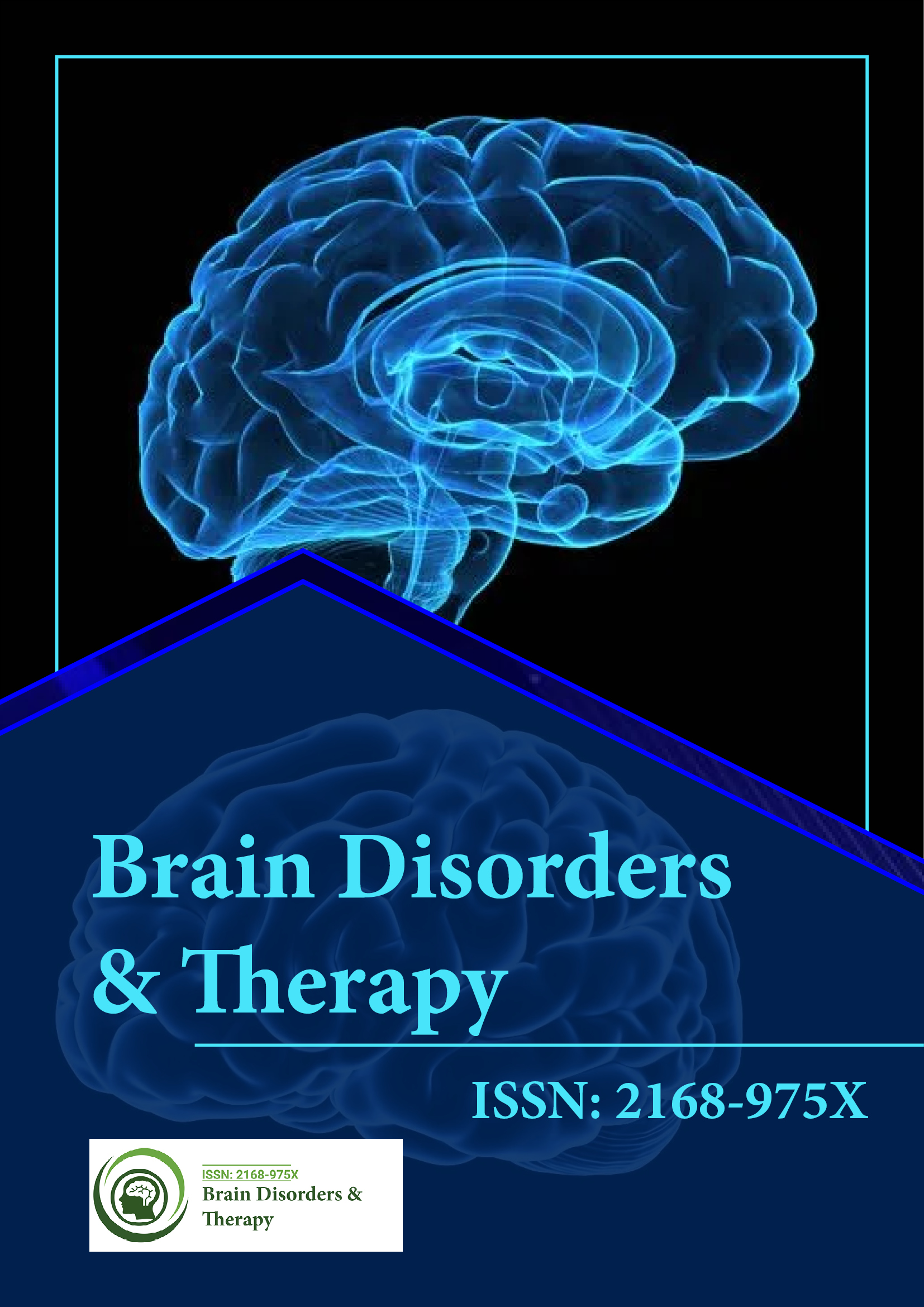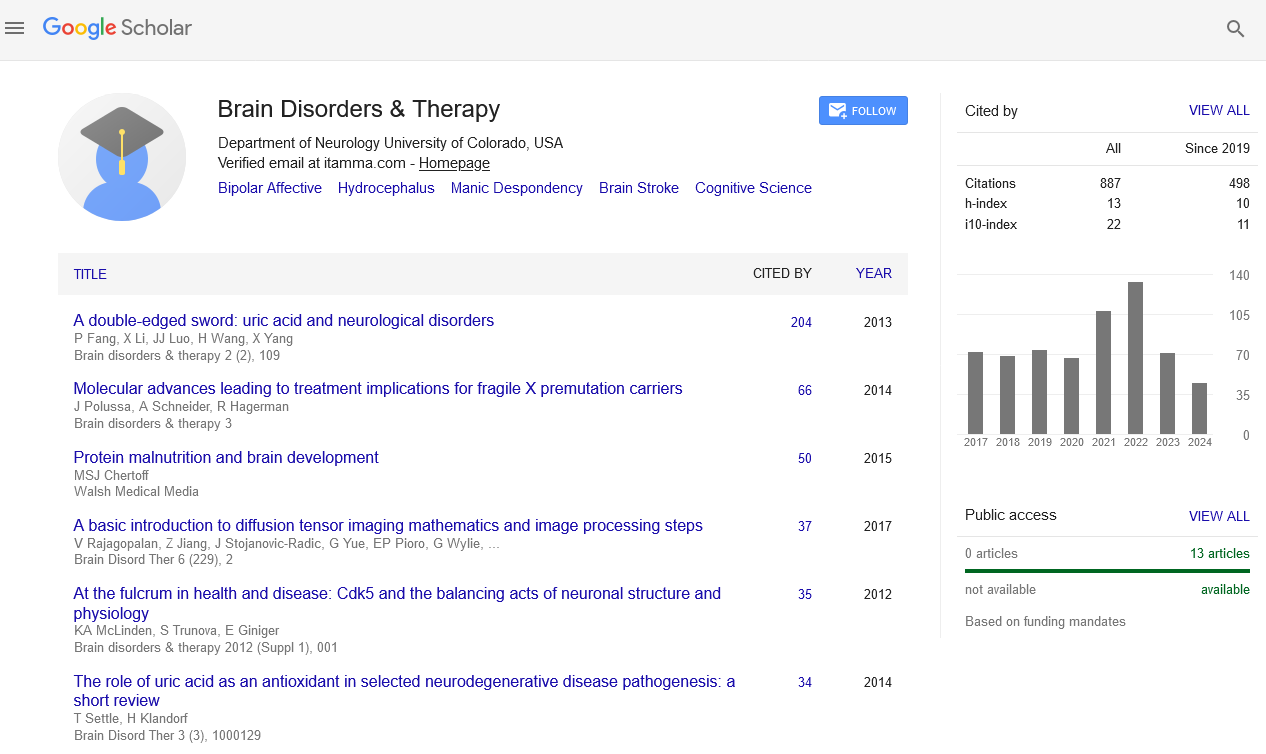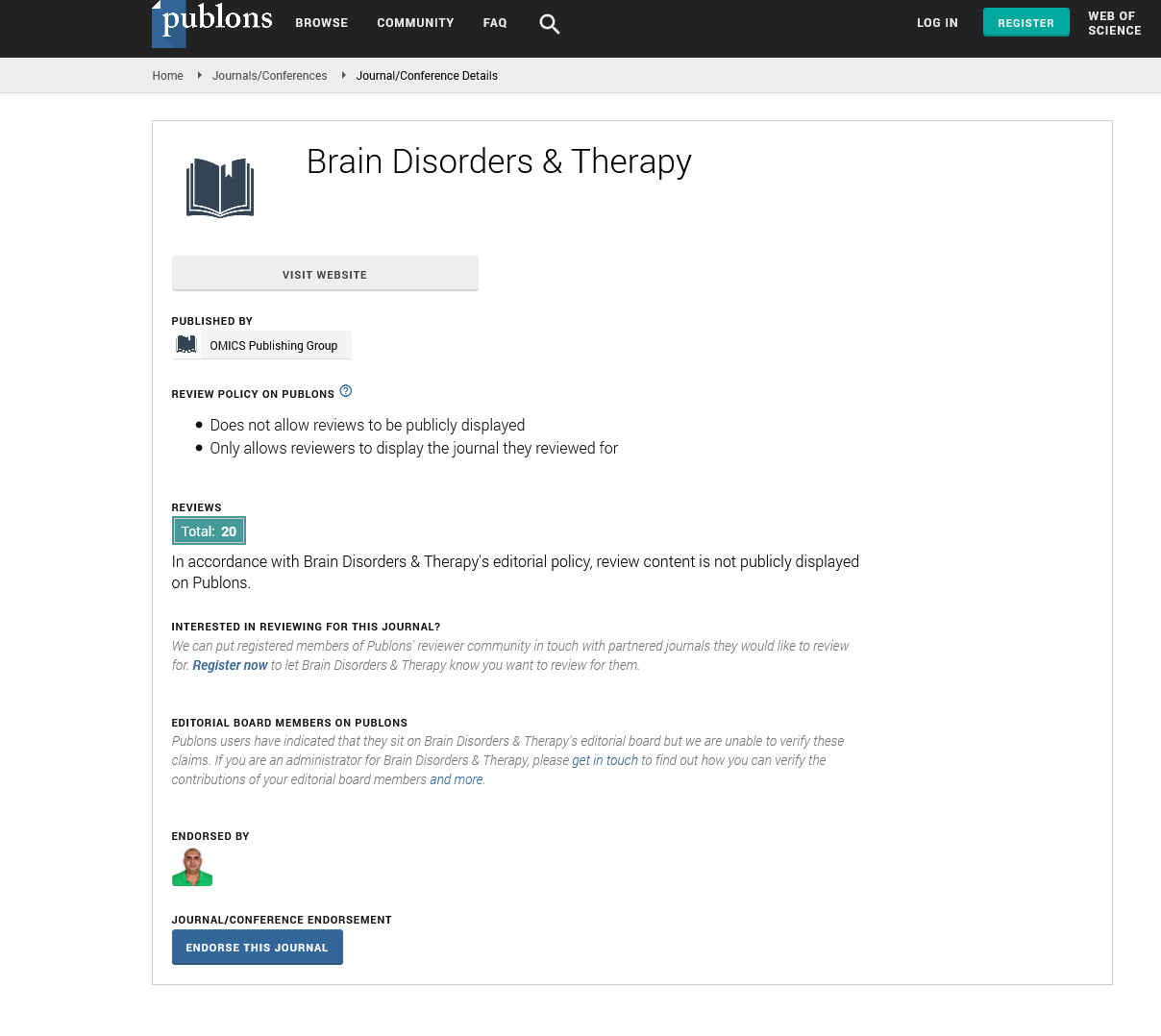Indexed In
- Open J Gate
- Genamics JournalSeek
- JournalTOCs
- RefSeek
- Hamdard University
- EBSCO A-Z
- OCLC- WorldCat
- Publons
- Geneva Foundation for Medical Education and Research
Useful Links
Share This Page
Journal Flyer

Open Access Journals
- Agri and Aquaculture
- Biochemistry
- Bioinformatics & Systems Biology
- Business & Management
- Chemistry
- Clinical Sciences
- Engineering
- Food & Nutrition
- General Science
- Genetics & Molecular Biology
- Immunology & Microbiology
- Medical Sciences
- Neuroscience & Psychology
- Nursing & Health Care
- Pharmaceutical Sciences
Perspective - (2025) Volume 14, Issue 1
Single-Molecule Chromatin Profiling Enhances Understanding of Neural Regulation
Ethan Park*Received: 19-Feb-2025, Manuscript No. BDT-25-28913; Editor assigned: 21-Feb-2025, Pre QC No. BDT-25-28913 (PQ); Reviewed: 07-Mar-2025, QC No. BDT-25-28913; Revised: 14-Mar-2025, Manuscript No. BDT-25-28913 (R); Published: 21-Mar-2025, DOI: 10.35248/2168-975X.25.14.290
Description
Understanding the complexity of human brain function at the molecular level is one of the foremost challenges in neuroscience and epigenetics. The chromatin landscape, which controls accessibility to the genome, plays a fundamental role in regulating gene expression and maintaining cell identity in the brain. Traditional approaches, such as bulk chromatin immunoprecipitation sequencing (ChIP-seq), have offered key insights into chromatin states. However, the advent of high-resolution, single-molecule approaches like single chromatin fiber profiling and nucleosome position mapping has introduced a change towards, especially when applied to post-mortem or surgically obtained human brain tissues. These technologies allow for the direct visualization of nucleosome arrangement along individual DNA fibers, enabling a more nuanced understanding of epigenetic regulation in the context of brain heterogeneity and plasticity.
In contrast to bulk analyses, which average signals across thousands or millions of cells, single chromatin fiber profiling captures the stochastic and dynamic nature of chromatin organization at an unprecedented scale. In the human brain—composed of diverse cell types including neurons, astrocytes, microglia and oligodendrocytes—this heterogeneity is essential. Each cell type possesses distinct epigenetic signatures and within a single cell type, gene expression patterns can vary widely across brain regions or developmental stages. Therefore, the ability to resolve nucleosome positioning and chromatin accessibility at single-fiber resolution could reveal previously inaccessible details about regulatory variation that drives brain development, function and disease susceptibility.
Recent advances in single-molecule imaging technologies, such as super-resolution microscopy and nanopore-based mapping platforms, have enabled researchers to physically observe nucleosomes along chromatin fibers. These observations are particularly informative when applied to regions known for cell-type-specific regulation, such as enhancers, promoters and insulator sequences. In the brain, activity-dependent gene regulation often involves transient chromatin remodeling events that may only be evident in small subpopulations of cells. For example, immediate early genes such as FOS, ARC and EGR1, which are critical for synaptic plasticity, can undergo nucleosome eviction or repositioning within minutes of neuronal activation. Single chromatin fiber techniques allow for detection of such fleeting events that are typically diluted or missed in bulk data.
Nucleosome position mapping, particularly when integrated with single-cell transcriptomic data, also provides insight into how epigenetic architecture influences transcriptional outcomes. By mapping nucleosome occupancy at Transcription Start Sites (TSS), transcription factor binding motifs and regulatory elements, researchers can link chromatin accessibility directly to gene expression profiles in defined neuronal subtypes. For instance, mapping nucleosome patterns around genes associated with neurodegenerative diseases such as Alzheimer's or Parkinson's may uncover epigenetic misregulation that precedes pathological changes. Similarly, in psychiatric conditions like schizophrenia, where gene expression is subtly dysregulated across multiple brain regions, subtle but recurrent chromatin alterations may be detected only through high-resolution profiling.
Another potential method lies in the integration of single chromatin fiber data with 3D genome architecture information. Chromatin looping and long-range interactions play key roles in gene regulation, particularly in large and transcriptionally active regions of the brain genome. Visualizing nucleosome patterns within the context of Topologically Associating Domains (TADs) or enhancer-promoter loops could reveal how large-scale genome folding affects fine-scale chromatin accessibility. This could bridge the gap between structural genomics and functional output in brain cells.
In conclusion, single chromatin fiber profiling and nucleosome position mapping represent transformative tools in neuroscience and epigenetics. By providing an unprecedented view of chromatin organization in the human brain at the single-molecule level, these techniques hold the potential to resolve complex gene regulatory mechanisms that underlie brain development, cognition and disease. As these methods become more refined and accessible, their integration with other omics and imaging platforms will enhance our ability to construct comprehensive maps of the human brain epigenome. Ultimately, this perspective highlights a future where brain function and dysfunction can be understood not just at the cellular or genomic level, but at the epigenetic resolution of single nucleosomes.
Citation: Park E (2025). Single-Molecule Chromatin Profiling Enhances Understanding of Neural Regulation. Brain Disord Ther. 14:290.
Copyright: © 2025 Park E. This is an open access article distributed under the terms of the Creative Commons Attribution License, which permits unrestricted use, distribution, and reproduction in any medium, provided the original author and source are credited.


